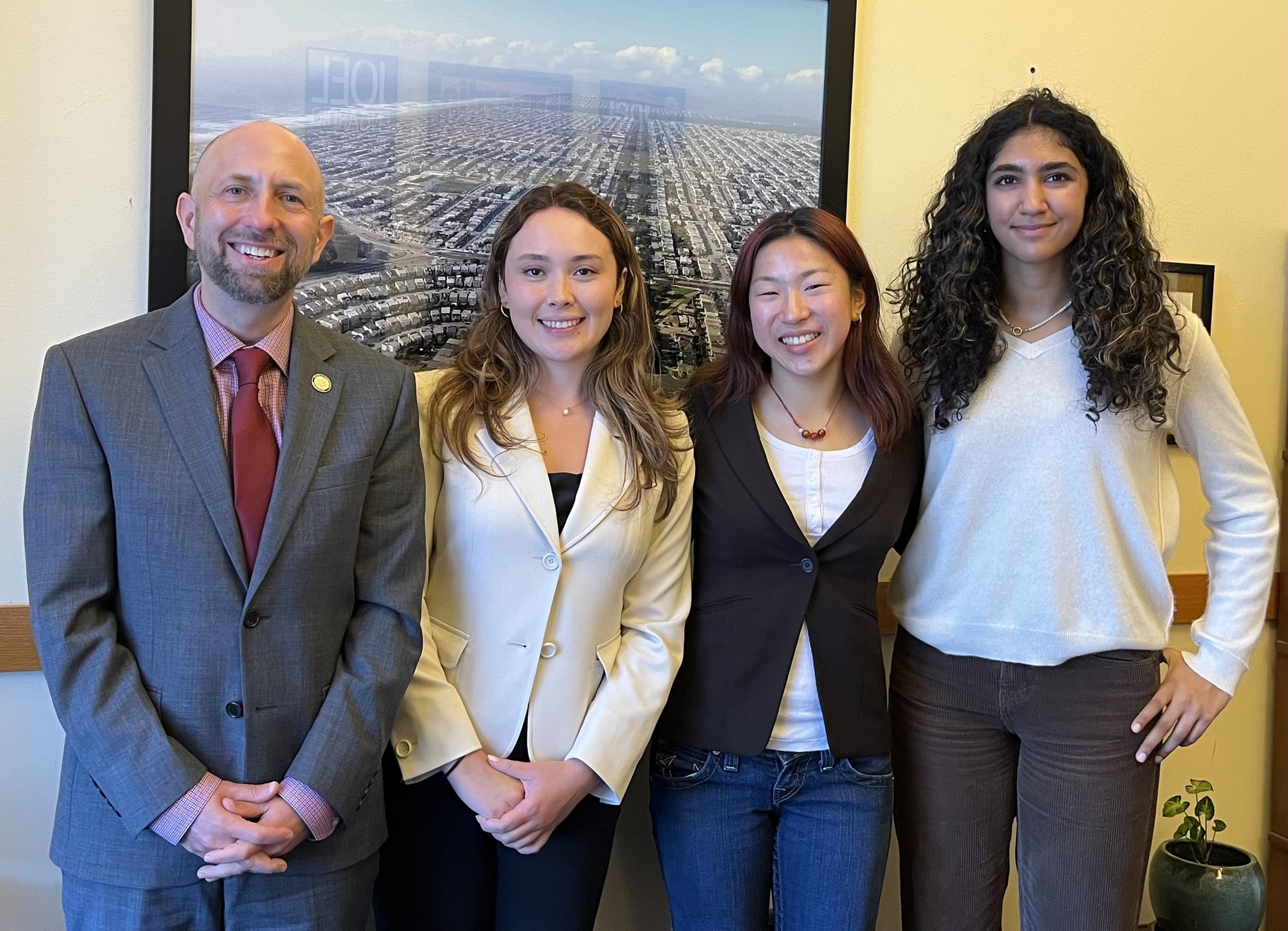Intern Voice: Linda Ye on Efficacy of the Drug Market Agency Coordination Center
Student intern Linda Ye
Intern Voice features student interns in Supervisor Joel Engardio’s office who researched issues and wrote OpEds for their final project.
By Linda Ye
The Drug Market Agency Coordination Center (DMACC) is a coordinated city initiative led by the Department of Emergency Management (DEM) and launched in April 2023. As one of the newest initiatives established this year, it has a clear mandate to combat the open-air drug market and the capability to succeed with the right support.
The initiative aims to address open-air drug markets by disrupting operations of three key areas: open-air drug sales, public drug use, and illegal fencing. DEM manages the initiative by coordinating unified command between local and state agencies. Some agencies involved in the initiative include SFPD, California National Guard, Department of Public Health, and more. The Mayor’s proposed budget includes $5.5 million for this effort: $1.5 million for operational costs, and the other $4 million for work orders.
Part of this effort involves law enforcement such as SFPD and the San Francisco Sheriff’s Office coordinating to arrest and detain users. Those detained are supported by Jail Health Services that offer a variety of services and care by medical professionals seven days a week. The initiative is currently exploring an alternate location that is not jail where individuals can be held and access health support. Individuals are offered treatment multiple times prior to release.
There is an urgent need for initiatives that address open-air drug markets in San Francisco.
Residents and small businesses are struggling from the lack of public safety, and hundreds have passed from overdose this year. Currently, DMACC is one of the only initiatives in San Francisco working on this effort. Its use of law enforcement has been controversial, with some pointing out that the arrests replicate harmful tactics from the War on Drugs. However, it is important to note that this initiative involves the collaboration of the public health department as well. Additionally, there are many ways that DMACC can continue to grow through its collaborations and become even more diversified by also addressing root causes of the open-air drug market.
DMACC has a lot of room to grow. While the arrests may aid in drug seizures and acknowledge the crime from the open-air drug market, the prosecution of dealers targets immigrant communities and arrested users are more prone to overdose due to the short-term incarceration from the initiative. DMACC also utilizes specialized street response teams of mental health clinicians, community paramedics, EMTs, social workers, and peer counselors that can help individuals navigate locations for care and treatment, but so far, no user has accepted these services for treatment.
Moreover, studies have shown that compulsory treatment does not suggest improved outcomes in comparison to voluntary treatment, but those who have actively sought help for treatment have also reported difficulties in finding available long-term treatment facilities despite mandates from Proposition T passed by San Franciscan voters in 2008 that requires the City to provide enough substance abuse treatment services and residential treatment capacity to meet the existing demand. Despite these shortcomings, DMACC has shown that it aims to address the drug crisis through an encompassing approach which is crucial to making sure that individuals are supported and removed from environments or situations that promote drug use. With more collaborative, long-term, and dedicated efforts, as well as research, DMACC has potential to be successful.
What DMACC currently incorporates into this effort is not a one-and-done solution; it requires patience and commitment from the community. We should support DMACC and its efforts, but we should also expand the network of professionals involved, and guide the initiative towards more comprehensive solutions generated through feedback and research. Furthermore, we should not rely solely on DMACC to address the drug crisis. As one veteran San Francisco narcotics officer puts it, “Everyone has to be pulling on the same rope.” In addition to DMACC, the City should also work to ensure affordable housing and the availability of quality jobs for all so that individuals will not have to look to the drug market to survive. We must work together, keep practicing compassion, and be open to development throughout the City of San Francisco.
Linda Ye is a rising senior at the Urban School of San Francisco and was raised in the Sunset. Her passions involve civic engagement, music, and running. She enjoys collaborating and working with all kinds of local community organizations and serves on the youth seat of the San Francisco Soda Tax Advisory Committee. She is also a youth commissioner representing District 4. In the future, she hopes to study politics and music.
Read the OpEds by other interns in Supervisor Engardio’s office. Kinnari Atluru points out flaws in the city’s response to homelessness. Veronica O’Brien makes a case for a Community Benefit District in the Sunset.
We had a talented class of interns this summer who worked in my City Hall office. Three assigned to my chief of staff focused on research. Their final project was to write an OpEd based on what they learned. One intern had completed her first year of college and the others were still in high school. Their focus, talent, and ability to engage in critical thinking gives me hope for the next generation. As the saying goes, “the kids are alright!”


